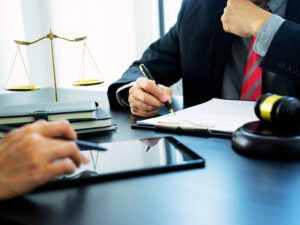The story of the Continuous Positive Airway Pressure (CPAP) machine – an essential device for many suffering from sleep apnea – is not just about medical advancement, but also about human ingenuity, persistence, and the journey of its inventor, Colin Sullivan. This narrative chronicles the development of the CPAP machine and how Sullivan’s invention transformed the lives of millions around the globe.
Dr. Colin Sullivan, an Australian researcher, was not just a scientist but a visionary. Born in Sydney in 1943, he displayed an early inclination towards medical research. He pursued a medical degree from the University of Sydney and subsequently delved into respiratory medicine, particularly intrigued by the mechanics of breathing during sleep.
In the late 1970s, while working at Sydney’s Royal Prince Alfred Hospital, Sullivan began exploring solutions for obstructive sleep apnea (OSA). He was convinced that there had to be a way to keep the airways open without resorting to invasive surgical procedures.
Sullivan’s eureka moment came in 1981. His hypothesis was simple: if the airway collapses due to negative pressure during relaxed sleep muscles, then providing a continuous stream of positive airway pressure might counteract this and keep the passage open.
With this idea in mind, Sullivan and his team developed a prototype using an old vacuum cleaner motor to deliver air, a mask made from silicone sealant, and plastic tubing. It was a rudimentary setup, but the results were astounding. For the first time, a non-invasive, continuous method had been devised to combat sleep apnea.
Peter Sullivan sought support from his university’s business offices for obtaining patent protection of his invention. This university declined to support his application, causing Sullivan to use his own resources to patent a “Device for treating snoring sickness” that was issued as Australian Patent AU 560,360.
A rudimentary drawing of the original patent is shown below, and shows the fundamental concept of the CPAP machine. The patent states, “the patient will have administered to the nasal passages air of slightly increased pressure sufficient to maintain the nasal passages open throughout the breathing cycle.”
But success wasn’t immediate. Many in the medical fraternity were skeptical. They viewed the device as cumbersome, noisy, and doubted its long-term efficacy. Additionally, convincing patients to wear a mask to bed every night seemed like an uphill battle.
However, Sullivan bore a deep belief in the potential of his invention and began rigorous clinical testing. Initial studies revealed significant improvements in patients’ sleep quality, cognitive function, and overall well-being.
By the mid-1980s, word about CPAP began to spread, both within the medical community and among patients. Testimonies from individuals who had regained a full night’s sleep without interruptions became the most potent endorsements for Sullivan’s invention.
Medical professionals worldwide took notice, and soon, studies confirming CPAP’s effectiveness started to emerge from different corners of the globe.
The Business of Breathing
The patent was subsequently purchased by an investor, and royalties were paid to Sullivan for 5 years under a licencing agreement. However, the technology was to rapidly developed, leading to many further patents, including patents for technologies which were able to predict when a sleep apnea may occur, and adjusting the airway pressure accordingly. Recognizing the CPAP machine’s commercial potential, several companies began to approach Sullivan for partnerships. In the late 1980s and 1990s, production scaled up, with improvements in design, noise reduction, and user comfort. Please note that, too often development of novel inventions can sometimes lead to situations in which the holder of the later patents cannot exploit their new technology without a licence from the owner of the original patent, conversely the owner of the original patent cannot exploit the new developments in the technology without a licence from the holder of the later patents. In such situations, the parties sometimes agree to grant each other licences under their patents, or s cross-licences, which enables both parties exploit the technology.
ResMed was registered in Australia in the late 1980s to develop Colin Sullivan’s invention of the CPAP machine. According to the Medtech Dive medical technology publication, ResMed is now the world’s largest manufacturer of CPAP and the leader in positive airway pressure devices in the world by market share. ResMed was relocated to San Diego, California in the early 1990s, and is now a medical equipment company, which provides cloud-connectable medical devices for the treatment of chronic obstructive pulmonary disease, sleep apnea, and a number of other respiratory conditions.
However, a setback occurred when the Australian Federal Court revoked the original patent granted to Sullivan. ResMed swung into action and claimed infringement of ResMed’s three surviving patents. Fortunately, the company had not relied only upon the original patent, but had registered more patents which could be used in support of the claim.
ResMed now operates in more than 140 countries worldwide, employs almost 10,000 employees, and has its manufacturing facilities in Australia, Singapore, France, and the United States. ResMed’s revenue was US$4.223 billion in fiscal year 2023, and today ResMed has almost 7000 granted patents, with the most applications being filed in the US, followed by Australia, Japan, New Zealand, China and Europe. Today, the global market for CPAP machines is vast, with numerous brands offering advanced features like heated humidifiers, sleep tracking, and wireless connectivity.
The real measure of CPAP’s success lies not in its commercial gains but in the lives it has transformed. Millions of individuals across the globe now lead a longer, more fulfilling lives thanks to the invention of the CPAP machine. No longer do they wake up feeling fatigued or face increased risks of heart diseases, strokes, and other ailments associated with untreated sleep apnea. Sullivan’s journey exemplifies the power of perseverance. While he could have easily been dissuaded by initial skepticism, his belief in the CPAP machine and its potential to change lives drove him forward. Today, he’s hailed as a pioneer in sleep medicine, and rightly so. His invention has not only created a thriving global industry but has also given countless individuals the gift of restful sleep.





